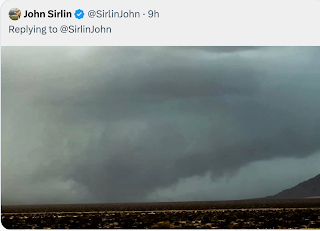The Joplin Deaths
News about where people died in the horrific tornado:
JOPLIN, Mo. — Margaret Tutt was a practical woman who lived alone and followed a standard drill when storms approached: She grabbed a purse packing a flashlight, a battery-powered radio and medication for a breathing problem, and went into her interior bathroom.
But on May 22, as the 92-year-old followed that routine, the single-story brick home on South Wall Avenue where she had lived since 1952 was demolished by an EF-5 tornado, said her daughter, Mary Ann Christman.
“That’s where she died,” Christman said. “She did exactly what she was supposed to.”
Tutt’s fate was not an exception. More people died in their homes in last month’s tornado than in stores, vehicles or anywhere else, according to a tally of deaths by location assembled by the Globe.
The Joplin Globe has analyzed where two-thirds of the people killed in the horrific tornado were located when they died and most were in their homes. Unfortunately, an F-5 tornado renders our advice (which works well in most tornadoes) to go into an interior bathroom in a home without a basement useless because it sweeps everything away.
The Globe does on to talk to experts to learn what can be done to make homes safer.
JOPLIN, Mo. — Margaret Tutt was a practical woman who lived alone and followed a standard drill when storms approached: She grabbed a purse packing a flashlight, a battery-powered radio and medication for a breathing problem, and went into her interior bathroom.
But on May 22, as the 92-year-old followed that routine, the single-story brick home on South Wall Avenue where she had lived since 1952 was demolished by an EF-5 tornado, said her daughter, Mary Ann Christman.
“That’s where she died,” Christman said. “She did exactly what she was supposed to.”
Tutt’s fate was not an exception. More people died in their homes in last month’s tornado than in stores, vehicles or anywhere else, according to a tally of deaths by location assembled by the Globe.
The Joplin Globe has analyzed where two-thirds of the people killed in the horrific tornado were located when they died and most were in their homes. Unfortunately, an F-5 tornado renders our advice (which works well in most tornadoes) to go into an interior bathroom in a home without a basement useless because it sweeps everything away.
The Globe does on to talk to experts to learn what can be done to make homes safer.




"Is there a F5? What would that be like"
ReplyDelete"The finger of God"
As corny as it sounded in the movie, that is probably the best desciprtion a person can give.
Yes, F-5's are horrible, horrible storms. Another person passed away yesterday bringing the Joplin death toll to 154.
ReplyDeleteIf fewer new homes are being built with basements (as the Joplin Globe article states), then it would be a good thing to provide some sort of tax incentive to encourage installation of either an underground dedicated storm shelter or (if that's not practical due to water issues) an above-ground reinforced safe room. Being caught above ground in an ordinary residential building in an F4/F5 storm is a death sentence.
ReplyDeleteAnd using hurricane straps to secure roofs in Tornado Alley and the South certainly ought to be required in building codes! In the more typical weaker tornadoes, those straps could make all the difference.
Diana
Most building codes look at wind speeds of 80-120 mph. Few residential structures are built to survive unscathed with winds of 120-150. These are just winds not the stuff carried along by these winds ex snow, trees, etc. A storm that rips culverts out of the ground is difficult to resist.
ReplyDeleteIn the 1960s there was a program sponsored by Civil Defense for design of simple in ground bomb shelters. Might be adaptable.